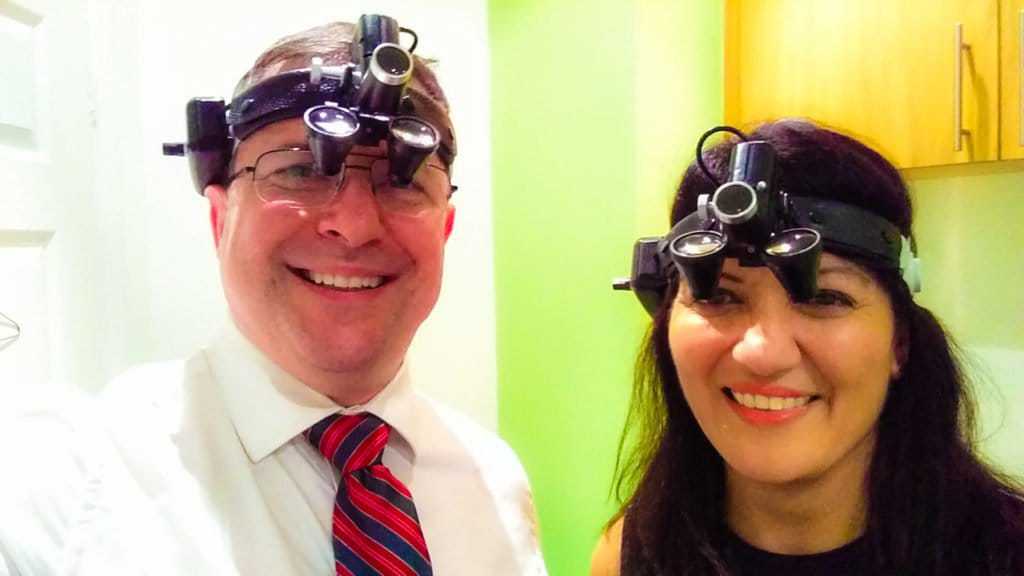
microsuction ear wax removal Bury clinicians
Expert Microsuction Ear Wax Removal In Bury, Lancashire
The only specialist microsuction ear wax removal clinic in Bury providing Microsuction Earwax Removal and Manual Instrument Earwax Removal by our expert earwax removal practitioners. All of our earwax removal practitioners are hand picked by our founder, Jason Levy. We really are the earwax removal specialists!
Our convenient location in Bury provides ear wax removal services for clients in towns and villages in Lancashire, and can be found at:
Professional ear wax removal Bury clinicians. If you have a blocked ear, come to our ear wax removal Bury clinic. We really are the ear wax removal experts in Bury.
CLICK HERE to book ear wax removal Bury now
Ear Wax Removal Bury Map
ear wax removal bury
Nearby Clinics
Nearby clinics include:
- Altrincham Microsuction Ear Wax Removal Altrincham WA15
- Chorley Microsuction Ear Wax Removal Chorley PR7
- Preston Microsuction Ear Wax Removal Preston PR2
Find your nearest clinic
CLICK HERE to book ear wax removal Bury now
Video: What Happens In Your Ear Wax Removal Bury Appointment
CLICK HERE to book ear wax removal Bury now
Frequently Asked Questions
CLICK HERE to book ear wax removal Bury now
Do you provide microsuction ear wax removal near me?Yes! We provide ear wax removal for clients in Bury and other towns and villages in Lancashire.Click here to book microsuction now
How Much Does Ear Wax Removal In Bury Cost?
Pricing can vary if it is one or two ears, at peak or off-peak times, and how far in advance the booking is made.
Click here to check the most up to date prices
CLICK HERE to book ear wax removal Bury now
Interesting Facts About Bury
- Bury was the Greater Manchester Town of Culture for 2021
- You can get ear wax removal Bury at Moorgate Primary Care Centre, Derby Way, Bury BL9 0NJ
- The name Bury, Buri and Byri comes from the Saxon language and means "a stronghold"
- Microsuction Ear Wax Removal Bury BL9 is just across the road from the Rock Retail Park in Bury
- In ancient times it is thought that the whole area was probably forest, marsh and moorland inhabited by nomadic herdsmen.
- Often praised as the best market in the country, Bury Market has a history going back to the reign of King Henry VI in 1444. There’s a Market Hall and Fish & Meat Hall, open every day except Sunday, as well as an outdoor Open Market that trades on Wednesdays, Fridays and Saturdays.
- A barrow or funeral mound probably from the Bronze Age was discovered at Whitelow Hill, Ramsbottom some years ago. A number of urns unearthed there are on display in Bury Museum.
- Bury is famous for its black pudding, and you can find great examples of this savoury dish at one of the many butchers’ stalls at the market.
- You might even want to enter the famous World Black Pudding Throwing Championships, which are held each September.
- Bury Metropolitan Borough consists of six towns, Bury, Ramsbottom, Tottington, Radcliffe, Whitefield and Prestwich. Formed in April 1974 as a result of Local Government re-organisation it was one of the ten original districts that formed the County of Greater Manchester.
- Bury Market is just ten minutes’ walk from microsuction Bury.
- The Romans certainly came to Bury and Gnaeus Julius Agricola Governor of Britain from AD78 to AD87, made a fortress town of Mancunium (Manchester) and built roads out from the town. One of these roads (Watling Street) crossed right through the Borough, running in a straight line through Prestwich, fording the Irwell at Radcliffe and continuing through Starling and Affetside towards the Roman town of Ribchester. Parts of the road are still visible today particularly around Affetside where there is a "cross". This may or may not be a Roman relic. It is said by some to mark the halfway spot between London and Edinburgh. Its true age is unknown but a plaque lists the stone as an Ancient Monument.
- Bury was the regimental town of the Lancashire Fusiliers, a line infantry regiment of the British Army active from 1688 to 1968 when it was amalgamated with three other regiments. Those 300 or so years are remembered at the well-designed Fusilier Museum, which offers deep insights about some world-changing conflicts. There’s a set of books gifted by Napoleon to the 53rd Regiment while in exile on St Helena, a tunic worn by commander Robert Ross who led a raid on Washington in 1814 and seven Victoria Crosses.
- During medieval times most of the area was held by the Lords of the Manor of Tottington, the De Montbegons. This barony was held on the Honour of Lancaster which had been granted by the King to Roger De Poictou at the end of the 11th century. From 1193 to 1219 Adam De Bury held the manor as "one knight's fee of ancient tenure". In the 14th century, Alice De Bury married Roger Pilkington, and the manor therefore passed into the possession of the Pilkington family until 1485 when the lands of Sir Thomas Pilkington were forfeited because of his allegiance to Richard III. The new King, Henry, granted them to one of his staunchest supporters, Thomas, Lord Stanley, who for his services was created Earl of Derby. The Stanley family have been Lords of the Manor ever since.
- It is recommended that you soften your ear wax four times a day for five days prior to your ear wax removal Bury appointment.
- Bury Transport Museum can be found in the Grade II-listed Castlecroft Goods Warehouse, which went up in 1846 for the East Lancashire Railway, and which since the 1970s has housed a fabulous collection of vintage vehicles. The building was restored in 2010 and contains 19th-century steam tractors, buses and trams. The showpiece is Hilda, a steam roller built in 1921 and in service for an amazing 50 years before being rescued from the scrapheap.
- Erected in 1852 and up in the West Pennine Moors outside the town of Ramsbottom is The Peel Monument, which is a 40 metre high Gothic Revival tower on a majestic vantage point at the top of Holcombe Hill. The monument was built in memory of Bury-born statesman Sir Robert Peel, twice the Prime Minster of the UK in the 1830s and 1840s, and best known for police reforms – notably the first professional police force. At this location on the southeastern ridge of the West Pennine Moors there are breathtaking views south over Greater Manchester, Cheshire and across to North Wales. The view is even better from the top of the tower, but you can only climb these 148 steps on heritage days.
- In the south of the area most of the land was acquired by purchase of Lord Grey de Winton and his successor, the Earl of Wilton, is still the present owner.In the Middle Ages the "Black Death" led to a shortage of labour. Land previously ploughed fell into decay. Large areas were turned into pastures and sheep were reared. It was at this time that Bury appears to have become a centre for wool and woollen cloth.
- The Neoclassical Derby Hall on Market Street has been a live music venue since 1979. The Met is a linchpin of the Greater Manchester arts scene and wins awards practically every year, most recently as Small Music Venue of the Year in 2017 (Northern Soul Awards). Joy Division played a curtailed concert here in April 1980, which ended in a riot because troubled frontman Ian Curtis wasn’t present.
- Little changed in Bury until the beginning of the 18th century, when a change in the textile world commenced. John Kay, born at Walmersley, Bury, invested his famous "picking peg" in 1733, which made the shuttle in his hand loom move more quickly. It became known as the "Flying Shuttle" and revolutionised cotton weaving. The Industrial Revolution was soon in full swing, and mills were built almost overnight, relying on the area's abundant soft water and the plentiful supplies of American cotton brought in from the port of Liverpool. The town of Bury and the surrounding area grew at an astonishing rate.
- Bury Castle: On Castle Square at the south flank of the Parish Church you can find the faint remains of a fortified house, once the seat of the Lords of the Manor of Bury and Pilkington. What’s left of the house dates to 1470 and was built by Sir Thomas Pilkington. It didn’t last long, as Henry VII ordered it to be razed after Thomas Pilkington supported the defeated House of York at the Battle of Bosworth in 1485. By 1540 Bury Castle was described as a ruin and come the 19th century most of the stone had been reused to build the growing town. But a site that used to be covered by a car park has been excavated, revealing a section of the inner wall of the moat in a green space that has been open since 2000. You can pick up a leaflet about the castle at the Bury Tourist Information Centre at the Fusilier Museum.
- Little changed in Bury until the beginning of the 18th century, when a change in the textile world commenced. John Kay, born at Walmersley, Bury, invested his famous "picking peg" in 1733, which made the shuttle in his hand loom move more quickly. It became known as the "Flying Shuttle" and revolutionised cotton weaving. The Industrial Revolution was soon in full swing, and mills were built almost overnight, relying on the area's abundant soft water and the plentiful supplies of American cotton brought in from the port of Liverpool. The town of Bury and the surrounding area grew at an astonishing rate.
- The Heaton Park Tramway is a kilometre-long heritage line for trips on vintage trams or railcoaches from the first half of the 20th century. Heaton Park in Bury was linked to the Manchester Corporation Tramways network in 1903, but trams had lost out to buses by the 1930s and the line was closed down. The Heaton Park Tramway is on some of the park’s original line and opened in 1980, running between Middleton Road and the Boating Lake. Three vehicles serve the line, the finest of which is Manchester Tram number 765, dating to 1914. There are 16 more vehicles under restoration or on show in the depot. You can visit on Saturdays, as well as Wednesdays during the school holidays.
- In 1791 a company called the Manchester, Bolton and Bury Canal Company was formed, and five years later coal was brought to the town by barges. The canal was used on Sundays and at fair time for very popular passenger trips to Bolton. It is still in existence, although now reduced in length, and the Manchester, Bolton and Bury Canal Society are achieving excellent restoration work around Radcliffe. Canal trips are now possible once more.
- A revamped industrial site, Burrs Country Park is on land acquired by Bury Council in 1986. Here before were the Burr and Higher Woodhill cotton mills, and while a lot of the old industrial remnants were removed some intriguing elements have been kept. The water wheel pit is still in place, as are the Burrs mill chimney, the mill floor and the feeder canal for the Elton Reservoir, and all are marked with information boards. These fragments are within almost 90 acres of scenic countryside, with diverse habitats like open fields, woodland, ponds and wetlands.
- The paper industry has grown in the area since the last century and has brought much wealth and prosperity. Even today there are still successful paper mills particularly in Radcliffe and Ramsbottom which place Bury among the most important paper making centres in Europe.
Thanks to Bury Council (https://www.bury.gov.uk/index.aspx?articleid=11677) and The Crazy Tourist (https://www.thecrazytourist.com/15-best-things-to-do-in-bury-greater-manchester-england/)
https://www.hearingfirst.co.uk/locations/bury-microsuction-ear-wax-removal-bury-lancs-bl9/

